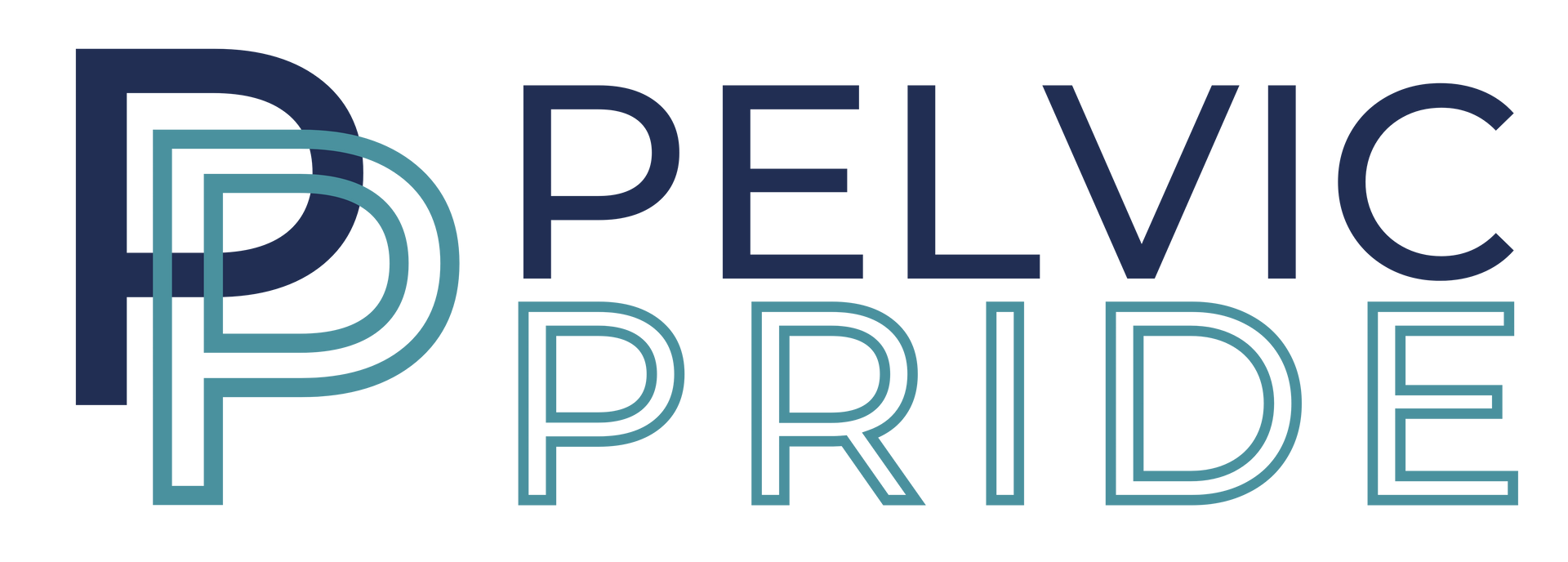The Five Types of Urinary Leakage
You may recognize that urine leakage sensation following a bad winter cold, possibly when out on a run, or even when trying to get to the bathroom on time. At Pelvic Pride, we educate our patients that urinary leakage is common, but does not have to be your ‘normal’! Let’s dive in further.
What is urinary incontinence?
Urinary incontinence (UI) is any undesired urine leakage during the day or night that can range from a few drops to enough to wet your clothing. Urinary leakage can impact any person with a bladder, and can be associated with a history of:
- Pregnancy and childbirth (including delivery via Cesarean section)
- Chronic urinary tract infection (UTI) symptoms
- Surgical or medical procedures in the abdomen, hip, pelvic, or genital tissues/structures
- Post prostatectomy surgery
- An underlying medical condition, such as diabetes or neurological condition
To prevent urinary leakage, we rely on the pelvic floor muscles. These muscles run from the pubic bone (front) to the tailbone (back) in your pelvis and form a bowl- or hammock-shape at the base of the pelvis to help provide ‘bottom-up’ support to the urethra, bladder, and colon.

One key function of these pelvic floor muscles is to provide sphincteric control around the urethra and anus. If for any reason these muscles aren’t able to ‘do their job’, it could result in that leakage sensation such as with a sneeze, going for a run, while trying to get to the bathroom in time, or while simply walking or changing positions.
Urinary leakage (incontinence) can be categorized in five different ways:
1. Stress incontinence:
Leakage that occurs with movement, exercise, or anything that places excess pressure on the bladder, like a cough, laugh, or a sneeze. This may occur with physical activity such as running or with daily activities like lifting, squatting, or reaching. Stress leakage is typically associated with pelvic floor muscle weakness as the muscles may not be able to provide the ‘bottom-up’ support and sphincter control to the urethra and bladder during moments of added pressure through our system.
2. Urge incontinence:
Leakage that often occurs before reaching the bathroom due to a sudden, strong urge to empty the bladder. Urge leakage typically is linked to pelvic floor tension and/or weakness, and individuals may also experience urinary frequency, bladder spasms, or ‘UTI-like’ symptoms, such as urinary hesitancy, pain or burning with the urine stream, and difficulty emptying the bladder.
3. Mixed incontinence:
Some individuals may experience a combination of both stress and urge leakage as described above. This has been deemed ‘mixed incontinence’ by the medical world and requires a mix of treatment approaches to address how our pelvic floor manages increased stress as well as intense or frequent urges to go.
4. Functional incontinence:
Leakage that occurs due to external or environmental factors and not directly related to the bladder or pelvic floor muscles, including difficulty reaching the toilet on time due to mobility or balance difficulties, muscle weakness which may impact clothing management, environmental barriers or obstacles including rugs or furniture, or other cognitive-communication difficulties.
5. Overflow incontinence:
Leakage that occurs due to over-filling of the bladder because the bladder is unable to effectively empty. This can lead to frequent urination and the release of only small amounts of urine at a time. It may also be associated with urinary hesitancy, a weaker urine stream, or straining to empty the bladder. This type of leakage may be associated with a neurological condition; a blockage impacting the bladder or urethra, such as an enlarged prostate; or because the bladder muscle can’t work effectively enough to squeeze the urine out.
So how can pelvic health physical therapy help?
Great question! Urinary leakage may be occurring for a variety of reasons and can extend beyond the pelvic floor muscles so it is imperative to perform a whole body assessment to determine your specific causes of leakage. To do this, we start by listening to your story and how your symptoms are impacting your daily activities, work, exercise, and/or sleep. From there, we can perform assessment measures, such as strength, coordination, and mobility/flexibility of the muscles and soft tissues of the pelvis, back, hips, foot, and ankle (yes, even the ankle!), to help determine why your leakage may be occurring.
Once we’ve gathered this information we will start treatment to see which techniques may best support you and your symptoms. [Read more about pelvic floor treatment methods
here.]
Based on how your symptoms present and the evaluation findings, your treatment may focus on pelvic floor muscle relaxation/lengthening to assist with any tension of the pelvic floor, muscle strengthening and/or coordination training to improve the ‘bottom-up’ support to your bladder and urethra by the pelvic floor muscles. Your pelvic floor therapist may also integrate treatments such as:
- Flexibility and strength exercises of the core, hips, and back
- Pressure management and awareness with breath strategies
- Posture awareness including toileting positioning and task-specific ergonomics, such as workday setup and/or exercise mechanics
- Lifestyle or daily habits, including daily fluid intake, sleep, stress, movement routines
- Bowel health education due to the direct impact your bowels can have on your bladder due to the fact that these organs live next to each other in the pelvis (think how constipation and stool in the rectum may physically impact bladder due to being neighboring structures)
As you can see above, there are a variety of reasons you may be experiencing urinary leakage, therefore an individualized approach from your pelvic floor therapist will be important as symptoms can present differently from person-to-person. This individualized approach is also important due to the differences in how each patient connects with and responds to the various treatment methods. Ultimately, our goal is to help you gain control over your symptoms and assist you with getting back to the activities you love!
tldr;
- There are five main types of urinary leakage: stress, urge, mixed, functional, and overflow
- Performing a whole body assessment is key in determining why you are experiencing leakage
- An individualized treatment approach ensures each treatment method is working for your symptom presentation
Where to find treatment in Maryland
At Pelvic Pride Physical Therapy & Wellness, we specialize in the treatment of ALL pelvic floor conditions, including urinary leakage, so you are in the right place! We are conveniently located in the Federal Hill neighborhood in Baltimore MD. Fill out our contact form & our Patient Care Specialist will reach out to you ASAP!
Next on Your Reading List
Love our content? Let's stay connected!
Subscribe to our newsletter for personalized updates when new blog posts are dropped.






